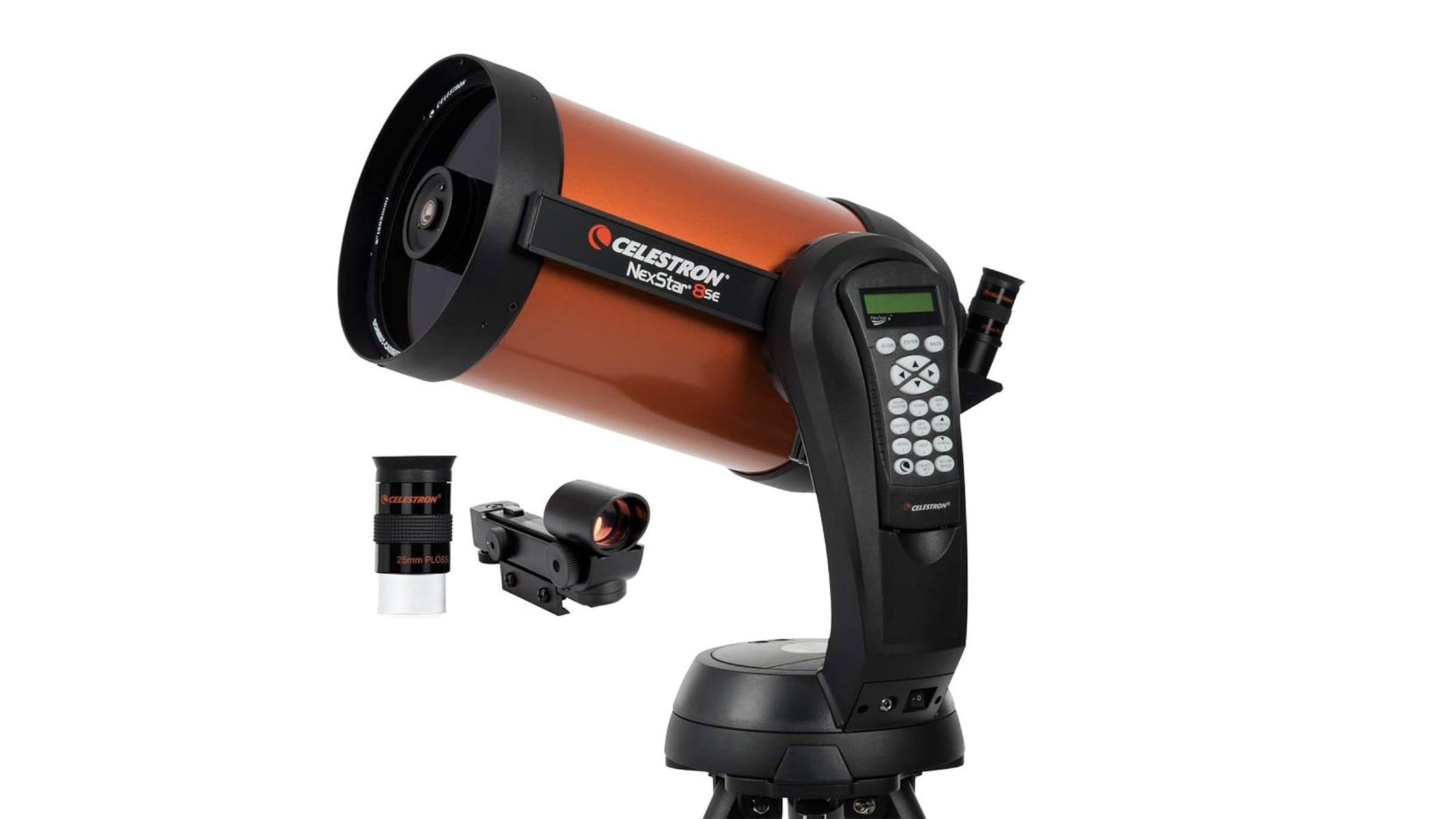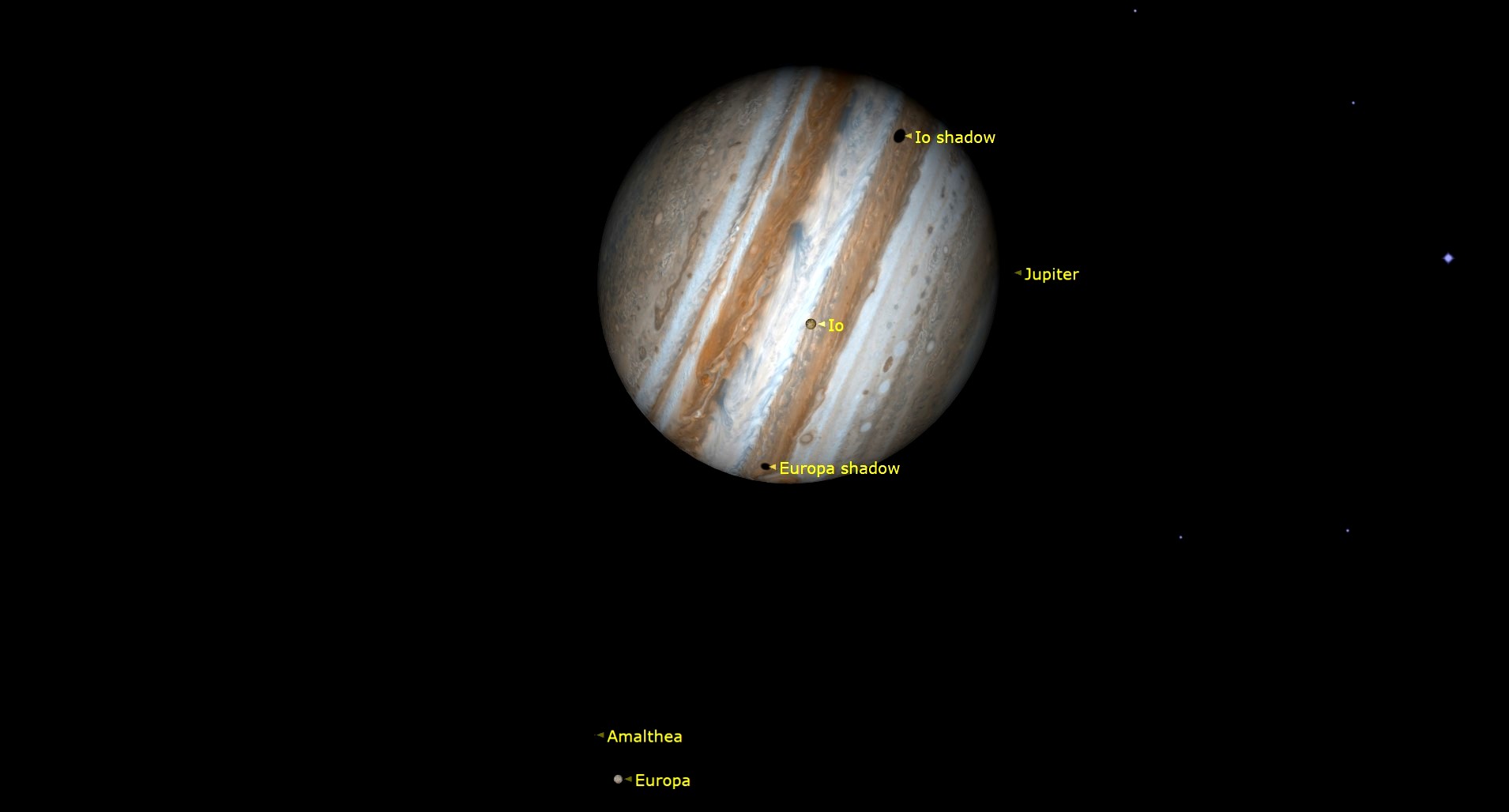Turn a telescope to the eastern sky in the hours following midnight on Nov. 5 to see two colossal shadows darken the cloud tops of the gas giant Jupiter as the Galilean moons Io and Europa pass between the colossal world and the sun.
Jupiter will be visible as a bright point of light roughly 30 degrees high in the eastern sky at 12:13 a.m. EST (0513 GMT) on Nov. 5. During this time, the shadows of both moons will be visible darkening the Jovian disk as it shines below the bright "twin" stars Castor and Pollux in the constellation Gemini. Remember, the width of your clenched fist held at arm's length is roughly equivalent to 10 degrees in the night sky.
Io's shadow will be visible darkening Jupiter's right hand side slightly below the equator as the double shadow transit gets underway shortly after midnight on Nov. 5, though eager stargazers will also be able to track it as it moves left to right across the gas giant's disk in the preceding two hours. The moon itself will also be visible to the shadow's left, sharing the same cloud band.
Celestron NexStar 8SE

The Celestron NexStar 8SE is the best overall option if you want to view planets, in our opinion. It's pricey yes, but well worth the investment as it provides top imagery for planets, stars and beyond. It's a computerized telescope meaning your viewing experience is made easier. With crisp views across the field of view and a useful magnification of up to 180x, it provides plenty of bang for your buck. You can check out our Celestron NexStar 8SE review too.
Meanwhile, Europa's shadow will be visible encroaching on the extreme left of Jupiter's disk at the outset of the double transit, slightly farther from the Jovian equator. It will remain visible for a little under three hours — long after Io's umbral outline has slipped from view.
Jupiter plays host to a swarm of over 90 diverse moons, though only the largest four Ganymede, Callisto, Io and Europa — also known as the Galilean moons after famed Italian astronomer Galileo Galilei — are easily visible through an amateur telescope.
Stargazers hoping to catch a closer glimpse at Jupiter and its moons should check out our roundups of the best telescopes for viewing the night sky, while those new to the pastime may want to peruse our roundup of the best smartphone astronomy apps for navigating the post sunset realm.
Editor's Note: If you would like to share your photos of Jupiter with Space.com's readers, then please send your image(s), comments, and your name and the location of your shoot to [email protected].

.jpg) 4 hours ago
1
4 hours ago
1

 English (US)
English (US)